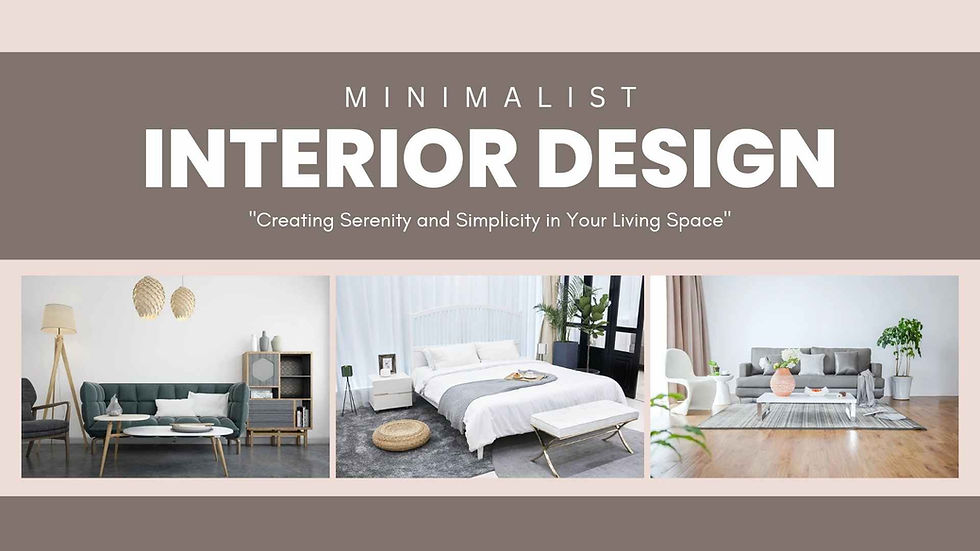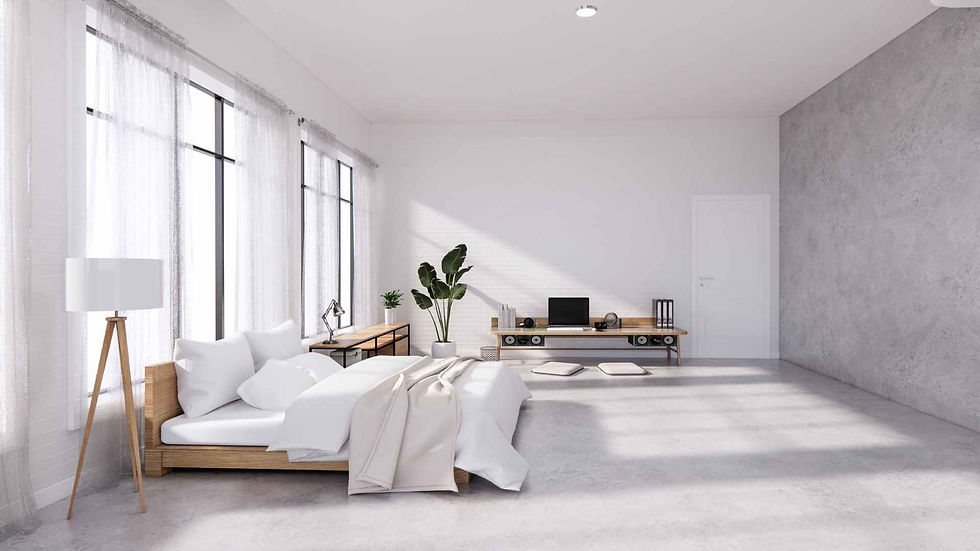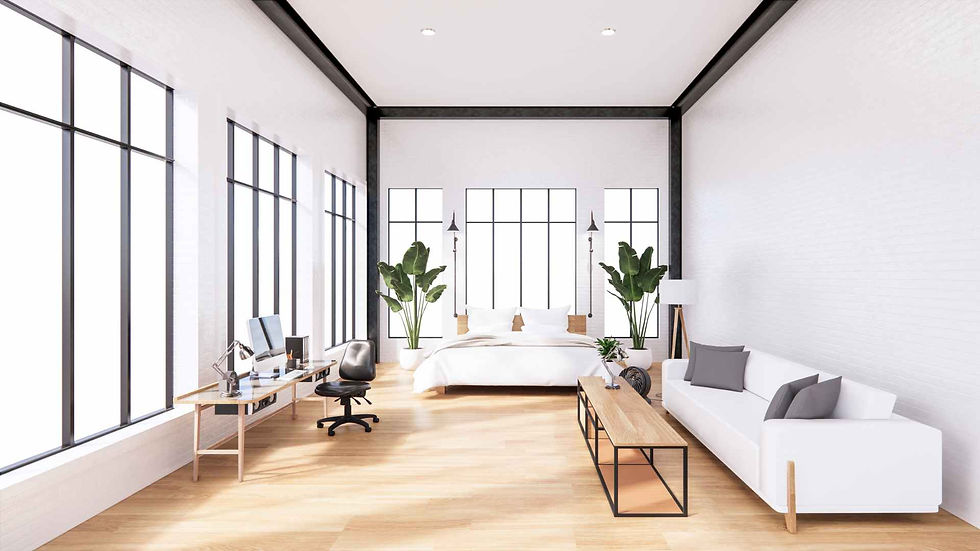Minimalist Interior Design: Creating Serenity and Simplicity in Your Living Space
- Tech Arch
- Jul 12, 2023
- 2 min read
Updated: Aug 3, 2023
Minimalist Interior Design: Creating Serenity and Simplicity in Your Living Space

Introduction:
In a fast-paced and cluttered world, minimalist interior design offers a breath of fresh air. Rooted in simplicity and functionality, this design style embraces clean lines, open spaces, and a curated selection of essential elements. By adopting a minimalist approach, you can transform your living space into a serene and harmonious sanctuary. In this blog, we will explore the key principles of minimalist interior design and discover how it can bring a sense of calm and simplicity to your home.

Embrace a Neutral Color Palette:
Minimalist design is characterized by a muted and neutral color palette. Opt for shades of white, beige, gray, or earthy tones that create a sense of tranquility. These colors serve as a backdrop that allows key design elements to stand out while promoting a soothing and serene atmosphere.
Declutter and Simplify:
At the heart of minimalist design lies the concept of decluttering and simplifying. Start by removing unnecessary items and keeping only the essentials. Streamline your space by organizing belongings in functional storage solutions, such as hidden cabinets or built-in shelves. Adopting a minimalist mindset helps create a sense of spaciousness and allows the beauty of each item to shine.

Clean Lines and Simple Shapes:
Minimalism celebrates clean lines and simple shapes. Choose furniture with sleek profiles and minimal ornamentation. Focus on quality over quantity by investing in well-crafted pieces that will stand the test of time. Incorporate furniture made of natural materials like wood, metal, or leather to add warmth and texture to the space.
Let Light In:
Ample natural light is essential in minimalist design. Maximize the use of windows and remove heavy curtains or blinds to allow light to flood the space. Natural light not only creates an airy atmosphere but also highlights the clean lines and simplicity of the design elements. If privacy is a concern, consider using sheer or light-colored window treatments that maintain the sense of openness.

Negative Space as a Design Element:
Negative space, also known as empty or white space, is a key element in minimalist design. It provides visual breathing room and allows the eye to rest. Embrace empty walls, uncluttered surfaces, and open floor plans to create a sense of spaciousness and balance. Remember, it's the absence of excess that makes minimalist interiors truly impactful.
Thoughtful Use of Accessories:
While minimalism emphasizes simplicity, it doesn't mean you have to eliminate all accessories. Choose a few carefully selected pieces that add character and personal touch to your space. Incorporate items with clean and sculptural lines, such as a statement artwork or a carefully placed plant. By exercising restraint, you can create a curated and purposeful arrangement that complements the overall minimalist aesthetic.

Conclusion:
Minimalist interior design offers a respite from the chaos of modern life. By adopting a less-is-more approach, you can create a serene and visually appealing living space. Embrace neutral colors, declutter your surroundings, and focus on clean lines and simplicity. Remember, minimalism isn't about sacrificing comfort or style but about creating an environment that promotes calmness, balance, and a sense of well-being. Embrace the beauty of simplicity and let your minimalist sanctuary become a haven of tranquility.
Author:
TechArch Group
Technical & Architectural Solutions
+91 99152-35159









Comments